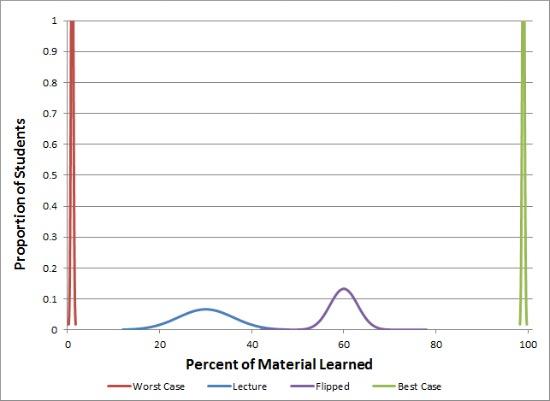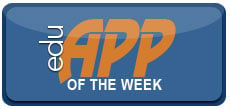Donald Eastman III, the president of Eckert College, wrote about the limits of online learning: “…what works for most students…is a small classroom…where a respected authority…is a spellbinding revealer of mysteries – not simply because he or she knows things we don’t, but because a gifted teacher reads the audience the way an actor reads the room…”
Read more ›CURRENT ARTICLE • November 18
OTHER RECENT ARTICLES
 We’ve all heard the expressions “Death by PowerPoint” and “PowerPoint-induced coma.” I think we’d all agree that most of PowerPoints stink. Yet after sitting through presentation after presentation that bore us to tears, we turn around and subject our students and colleagues to the same torture that we find so excruciating. Why?
We’ve all heard the expressions “Death by PowerPoint” and “PowerPoint-induced coma.” I think we’d all agree that most of PowerPoints stink. Yet after sitting through presentation after presentation that bore us to tears, we turn around and subject our students and colleagues to the same torture that we find so excruciating. Why?
It seems like everyone is talking about the flipped classroom. But how do you use this new model to construct lessons and assessments that reinforce student learning?
Read More ›Increasingly, educators are searching for video resources online by sifting through YouTube, searching on Google, and visiting various topical sites. However, what’s often required is quite specific and it can be hard to find exactly what you need.
Read More ›
|
The average person probably remembers more of what they see than what they hear. For example, you’re likely to readily remember a person’s face more easily than you would his name. However, according to molecular biologist John Medina, the key to more remembering what we see and hear is enhanced when repetition is involved. Don’t get me wrong, I am not advocating mass memorization of anything by anyone. Memorization is necessary in some cases, but given the easy access to all kinds of information, I see little reason for my students to commit large amounts of information to organic memory as opposed to knowing how and where to find it. What I am merely suggesting is that frequent re-exposure to snippets of content will likely aid understanding of what was presented or discussed. I have found that the podcast is one way to provide short bits of information for clarification purposes or as a way to provide expanded discussion of something that I covered in class.
Here are two key guidelines to follow when developing a podcast:
- Keep it short - Podcasts should address only one topic or concept at a time; and
- Add value - Podcasts should not simply replicate something that already exists verbatim on paper. There should be some added value to what is shared in this new format.
I use podcasts in a variety of ways and so could you. I use podcasts to welcome students to my classes, to provide clarification on assignments or course content, and even to provoke emotional responses to something we are discussing in class. Here is an example of an emotional response podcast using the app Voice Record Pro (HD), Humans as Technology.
What I just shared with you was a 2.5 minute snippet from my Technology and Society class where I was attempting to establish a starting point about what technology may or may not be. Keep in mind that the sample shared is addressed much more in-depth in class. You may say, well, why would students want to come to class if some of the class content is addressed in a podcast? Fair question. My intent in using podcasts is not to address all of the content just one small part of it. Additionally, I am hoping that what I talk about serves as a way to draw students in and is interesting enough for them to want to come to class. Alternatively, it could be that what I say in the podcast encourages them to come to class because they feel compelled to challenge the notion of humans being classified as technology. And finally, I hope that what I present might offer something a bit different, and serve as a trigger for what I covered in class. If my podcast serves any one of the aforementioned purposes, then the tool is well worth using with my students.
There are many other voice recording apps, but I’m, all about “cheap and efficient” when it comes to apps. Voice Record Pro fits the bill for me and I think it will for you, too. The interface is easy to use and allow you to perform rudimentary edits, although you may have to use a program like Audacity if you want to have more editing options. I particularly like the fact that I can convert my recordings to the popular mp3 format used by most, if not all, portable devices that our students carry around with them. Best of all, Voice Record Pro provides a host of options for sharing created podcasts and lets me give each podcast a unique name. The latest update to the app adds some additional bells and whistles that I will let you discover on your own. Here are two screen shots of the app both of which are fairly straightforward.
| The start screen. |
| The Edit/Share Screen |
Summary:
Voice Record Pro (HD) is one of many available voice recorders but the cost (it’s free!) and the app’s simple interface makes it a cinch to use. Here is how easy it is to get started:
- Touch the ‘Record’ button to begin, then ‘Pause’ to take a break, and ‘Stop’ to finish your recording.
- Touch the ‘Back’ button to navigate to a listing of all recordings made.
- Selecting a recording will bring up a variety of share options including naming, simple editing options, and converting your file to an mp3 format.
What could be easier than that? Of course, there is an ‘Edit’ button, but if you plan your podcast well, follow a short prepared script, and keep your podcast short, who needs, an edit button?
Dave Yearwood, Professor and Chair of the Technology Department at the University of North Dakota.
Read More ›A small but growing number of faculty at major universities are experimenting with the inverted or flipped classroom. It’s an instructional model popularized by, among other influences, a Ted Talk by Khan Academy founder Salman Khan, which has received more than 2.5 million views. Institutions as varied as Duke University’s School of Medicine, Boston University’s College of Engineering, and the University of Washington School of Business have joined Clemson, Michigan State, the University of Texas, and many others in experimenting with changing from in-class lectures to video lectures and using class time to explore the challenging and more difficult aspects of course content.
Read More ›A sociology professor in an undergraduate introductory social problems course used a blog to “enhance student participation, engagement and skill building.” (p. 207) In the article referenced below, this professor shares her experiences of using this assignment with 263 students across four semesters.
Read More ›The Internet flipped learning before instructors did. Want to find out something? Google it. Wikipedia it. Use your laptop or smartphone or iPad. That’s where the “answers” are. Some of us initially reacted to this cyber-democratization of information asserting, “This isn’t right! The Internet is full of incomplete and simply wrong information.” But the challenge to the classroom was more profound. It has raised questions among students and even administrators about the need for face-to-face classrooms at all, as if correct information and unchallenged “opinions” were all that was needed.
Read More ›The discussion board in Kathleen Lowney’s large blended (or hybrid) section of introduction to sociology at Valdosta State University wasn’t serving its intended purpose of engaging learners with the content and preparing them for face-to-face class sessions. She tried dividing the students into smaller discussion groups of 50 and then 20, and the results were the same: the weaker students waited until the last minute and essentially repeated what the better students had posted previously. When she replaced the public discussions with private journals, the quality of students’ posts improved, as did their grades.
Read More › While discussing the nuances of regression analysis, I saw some of my students smiling. It wasn’t a smile of understanding; it was a response to seeing a Facebook comment on their smart phone. I later learned that 99% of the students in the research method class were Facebook users, routinely checking for updates 10-20 times a day. I asked them to refrain checking their phones during class.
While discussing the nuances of regression analysis, I saw some of my students smiling. It wasn’t a smile of understanding; it was a response to seeing a Facebook comment on their smart phone. I later learned that 99% of the students in the research method class were Facebook users, routinely checking for updates 10-20 times a day. I asked them to refrain checking their phones during class.







